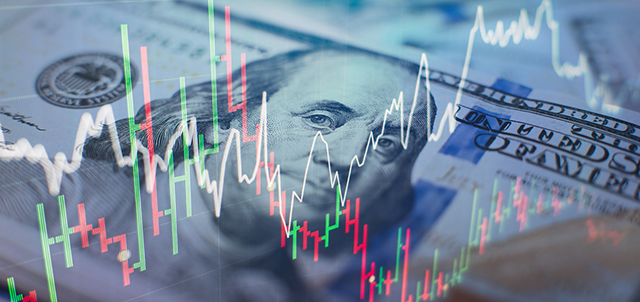Spread the Word: What You Need to Know About Bond Spreads

Investors who agree to take on more risk generally expect greater rewards. In the world of bonds, analyzing the size of that reward—typically in the form of higher interest payments—can provide you with clues about the risk of a particular issuance and overall market sentiment.
The difference between the yields of two different bonds is referred to as the “spread.” Typically, these spreads are measured in basis points (bps) where 1 bps equals 0.01 percent.
The difference between a bond’s yield compared to that of a relatively risk-free U.S. Treasury bond of the same maturity is known as a credit spread. Determining a bond’s credit spread is a common way to judge how much of a premium you could potentially collect for taking on more risk. Treasury bonds are viewed as some of the lowest risk investments since they’re backed by the full faith and credit of the U.S. government. Because of this, credit spreads for other bonds are often calculated based on a comparison against Treasury bonds.
Another type of bond spread is a yield curve spread, which involves the difference in yields for otherwise similar bonds with differing maturities. For instance, the spread between a 10-year and a 2-year Treasury bond can indicate economic expectations; a widening spread often suggests expectation of stronger economic growth.
What Makes Spreads Change?
Bond yields—the returns investors receive on bonds—are moving targets. They go up when bond prices go down and vice versa.
Likewise, bond spreads get wider or tighter depending on several factors, including supply and demand, credit risk and the overall state of the economy. Because a credit spread represents the relationship between a bond and a comparable Treasury bond, a spread may change because of factors affecting the bond itself, the Treasury bond against which it’s measured, or both.
An individual corporate bond’s credit spread might narrow as its credit profile improves, making it more likely that the company could meet its debt payments on time and in full. The spread could widen, however, if the company’s ability to pay is in doubt due to, for example, a massive drop in sales.
When investors pull money out of bond funds, which can happen for many reasons, the reduced demand for the bonds included in a fund’s portfolio can send the prices of those bonds lower. This can result in yields and spreads rising for those bonds. Conversely, strong demand for bond funds can lead to tighter spreads.
Tough economic times also tend to shift credit spreads for corporate bonds higher. When the economy gets rocky, investors seek safe havens, such as U.S. Treasury bonds, which sends their yields lower. By watching bond spreads, investors can get a pretty good idea of overall risk sentiment in the financial markets.
Why Do Bond Spreads Matter?
The credit spread between a corporate bond’s yield and that of a comparable duration Treasury bond can vary greatly between bonds of different credit ratings and bonds of different sectors within the same ratings group. So while keeping tabs on the credit ratings issued by agencies such as Moody’s and S&P Global Ratings is a good idea, paying attention to spreads can also help with your analysis of the risks and rewards of buying or selling any specific bond. For example, an unusually wide credit spread might indicate that corporate bonds are undervalued, potentially presenting an investment opportunity.
Understanding spreads can also help you diversify your investments across different types of bonds with varying risk and return profiles, aiding in the robustness of your financial portfolio. And bond spreads can serve as a barometer of the overall health of the economy and the credit markets. Wider spreads typically indicate higher perceived risk and economic uncertainty, while narrower spreads suggest stability. That’s something any investor might want to watch, even if you don’t own a single bond.
Learn more about investing in bonds.



